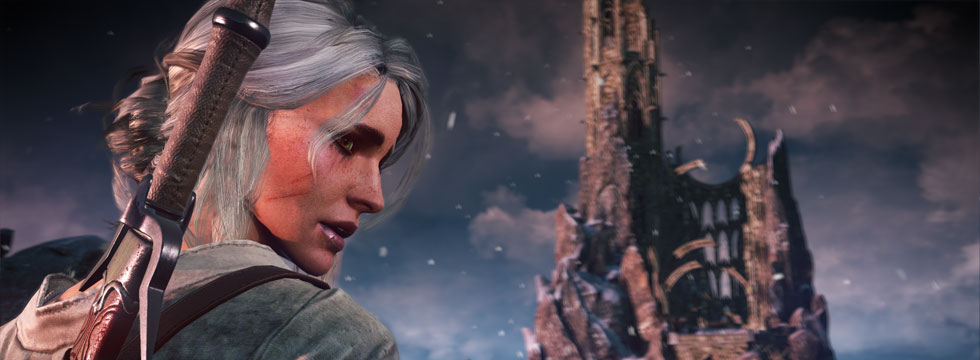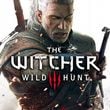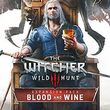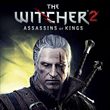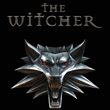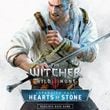Unfinished stories in The Witcher series – loose ends swept under the rug
Assuming it’s not just a pipedream, The Witcher 4 will surely not come into existence anytime soon. But why not indulge in reminiscing about the unresolved plot threads from the original trilogy?
Can you believe it’s been almost two years since The Witcher 3 was released? We had to wait so long for this game, and it was postponed so many times that I feel as if all of it happened just a couple of weeks ago. Another things is that since May 2015, there haven’t been many releases that would meet with a similarly warm reception from both journalists and players, or that would match the scope of The Witcher 3. That’s why, after two years, looking back at The Wild Hunt and contemplating its various facets is still a very relevant activity.
Today’s topic will be the plot of the whole trilogy by CD Projekt RED. To be more precise, we’ll consider those of the key threads that weren’t neatly resolved… and which, in theory, could be included in another part of the adventures of Geralt of Rivia. No, we’re not leaving Iorveth alone this time either. But that’s not all. We’ll backtrack to the very beginning of the trilogy, trying to answers such urgent questions as what happened to Alvin (or at least the memory of him). Ready for another plunge into the Witcherworld? Let’s go!
Just a small disclaimer before we proceed. The three games produced a myriad of characters and threads that didn’t meet any concrete resolution. Highlighting all these instances would mean that I would have to write a small anthology, hence this article will be restricted only to the most important matters. However, nothing stops you from adding your own ideas in the comments section.
One more thing. I don’t think I have to, nevertheless I will warn you: SPOILERS AHEAD!
Siegfried of Denesle and Yaevinn
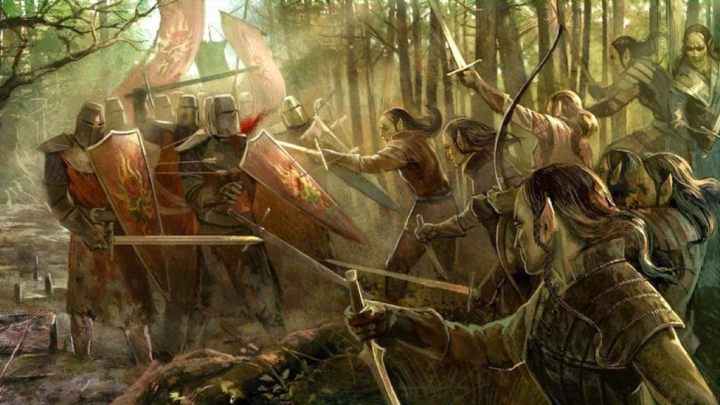
Let’s keep things nice and clear, and start from the beginning, i.e. The Witcher. The first thing that springs to my mind are the two characters that embodied the extremes of the game’s main conflict, and then disappeared in an uncanny manner, raising many eyebrows. Whereas we could meet Siegfried in the third act of The Witcher 2 (if we sided with the Order of the Flaming Rose in the first game), the matter of Yaevinn met a much swifter resolution. Are there any traces of them in The Wild Hunt?
Despite young king Radovid seizing control over the Order at the end of The Witcher, the name “Flaming Rose” was barely mentioned in The Witcher 3. In the Hearts of Stone expansion, the writers eventually remembered that such a faction existed, but apart from a new kind of human enemies being introduced – outlaw knights – this revelation didn’t change much. We didn’t even get to know what had happened to Siegfried. We were this close from learning that during the final conversation of the “Rose in the Red Field” quest, but the story of the grand master was not revealed after all. Whether the writers did that deliberately or not, is up for debate.
Those of the players who sided with the Scoia’tael in the original game have all the right to be even more disappointed. The only thing they got was a laconic mention of Yaevinn during one of the conversations with Iorveth in Assassins of Kings (if they had opted for the Iorveth path at the end of chapter one of this game). Since, to a limited extent, The Wild Hunt was located in the same area as the original Witcher, the developers had a fine opportunity to pick up the threads of Yaevinn and/or Toruviel; an opportunity, which unfortunately was passed up. When I come to think of it, Scoia’tael in general were conspicuous mostly by absence in the third game (even if they were not completely dismissed), but we’ll get to that later.
Alvin a.k.a. Jacques de Aldersberg
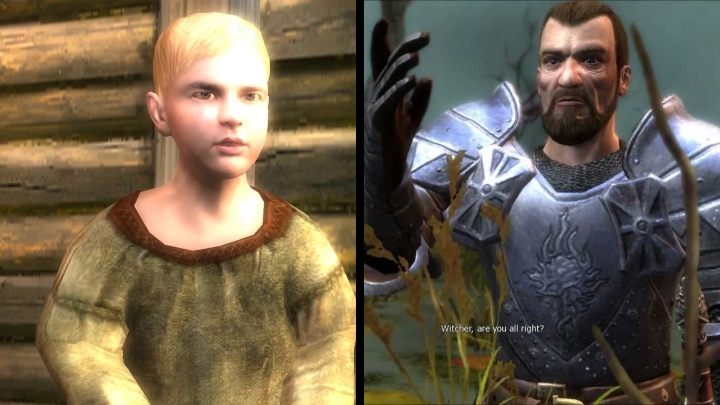
Here’s another thread from the first installment. This one is not as much open-ended as it is simply forgotten. The story of Alvin, in certain circles known as Jacques de Aldersberg, was a surprising and well-delivered piece of story that stretched throughout the entirety of The Witcher: from the first encounter (at the very beginning of chapter one) with the incredibly powerful Source in the Outskirts of Vizima, after which Geralt decides to take care of the boy, to the climactic duel with the Grand Master of the Order of the Flaming Rose – the last encounter in the game.
Yes, there’s not much to return to in this case. Still, it may come as a surprise that the most prominent thread of the first game was discarded so ruthlessly in subsequent installments. Sure, there was the quest (although calling it a “quest” is an example of a hyperbole) in The Witcher 3 called “Message from an Old Friend”, but raking Novigrad in search of a single letter from Alvin can hardly be called a treat. The only upside is that the message proved once and for all that Alvin and the Grand Master were indeed one and the same person.
How about the witchers reminiscing about the attack of the Salamandras on Kaer Morhen, the one that really wrought havoc in the secluded lives of the monster hunters (one of the witchers, Leo, was even killed). Well, there’s not a trace of that either. The gang that almost seized control over the whole kingdom of Temeria went out the window as well, and was only briefly mentioned on a few occasions in The Witcher 2.
Still, we need to remember that the whole idea of the Grand Master is a relic, a product of times when CD Projekt RED didn’t think about making an entire series of games or about following up on the story from Sapkowski’s book saga. After all, Yennefer and Ciri are practically non-existent in the first game; they were substituted by Triss and Alvin. On one hand, this is understandable: when the developers decided on bringing Ciri back in the third iteration, there was hardly any place in the game for Alvin, who basically was a male version of Ciri in the first game. Nevertheless, this all could have been dealt with more elegantly, with more regard for those who completed the first part.
Adda
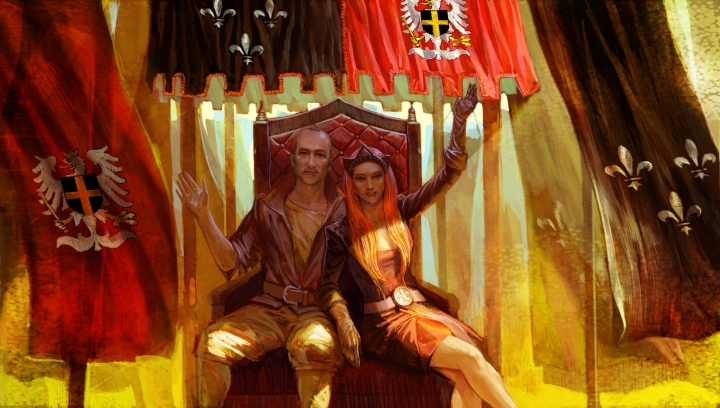
There is one more important character from the first Witcher left that should have been mentioned in The Wild Hunt, but wasn’t. As a matter of fact, Adda deserved that even more than Siegfried – we’re talking Radovid’s wife here (if you managed to lift the curse), and Radovid is a big shot in The Witcher 3. Meanwhile, the queen of Redania not only doesn’t appear along her husband; her whole existence seems to be a matter of such inconvenience that everyone prefers to leave it unspoken – one exception is a single letter to be found at the court of Vizima. It’s a good thing that at least in Assassins of Kings there are several traces of Foltest’s first-born daughter.
Iorveth and the Squirrels
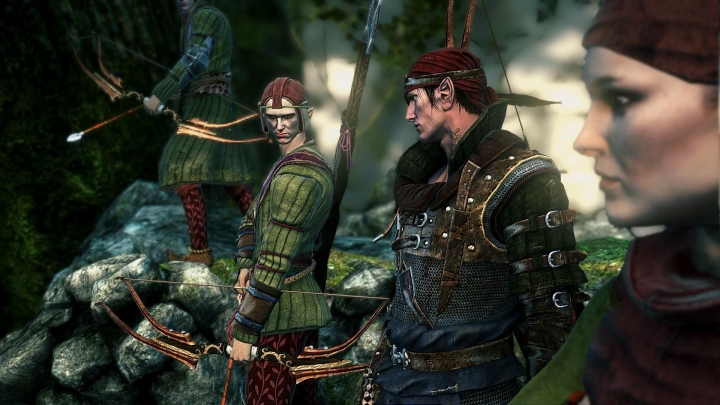
And so we arrive to the chief argument raised by everyone who wishes to find fault with The Witcher 3. However, before I proceed to expressing my discontent with Iorveth’s absence, I have to give some credit to CDPR. The fact of the matter is that the devs had originally planned to include the Scoia’tael leader in The Wild Hunt – we were supposed to meet him in the basement of Triss’ house in Novigrad. His potential significance to the plot is anybody’s guess, but it could be surmised that he would play an analogous part to that played by Vernon Roche. The reason why Iorveth ultimately didn’t make it into the game is disappointingly trivial – the developer didn’t have enough time to deliver a proper introduction of the character; of two evils, the lesser had to be chosen. The devs decided it was better not to introduce a character at all than to do it half-heartedly.
From a certain perspective, this was an honorable decision. But let’s take a second to reflect and see if there really isn’t anything to be annoyed about. There wasn’t enough resources to get Iorveth into the core game – okay, I get it. But what about the expansions? While he would probably seem out of place in Blood and Wine, he’d make a perfect feature in Hearts of Stone. Oddly enough, he was supposed to appear in the first big expansion as well, but once again, something prevented this plan from coming to fruition. Why, then, did the Order of the Flaming Rose make it into the expansion? This admittedly was a half-hearted inclusion; why not focus on a character like Iorveth? Why not do anything that would cater to the fans of the rebellious elf, instead of leaving them with one puny remark about him, uttered by some anonymous elves in the middle of nowhere?
Consequently, since the Scoia’tael commander was “kicked out”, the faction was doomed to be ignored as well. We probably ought to be happy that the Squirrels weren’t altogether dismissed from The Witcher 3 – even if their presence is meager, at best. Apart from a few outposts scattered throughout the world and the contract “Woodland Beasts”, where we meet “makeshift Iorveth”, i.e. Vernossiel, they’re virtually not in the game.
Saskia
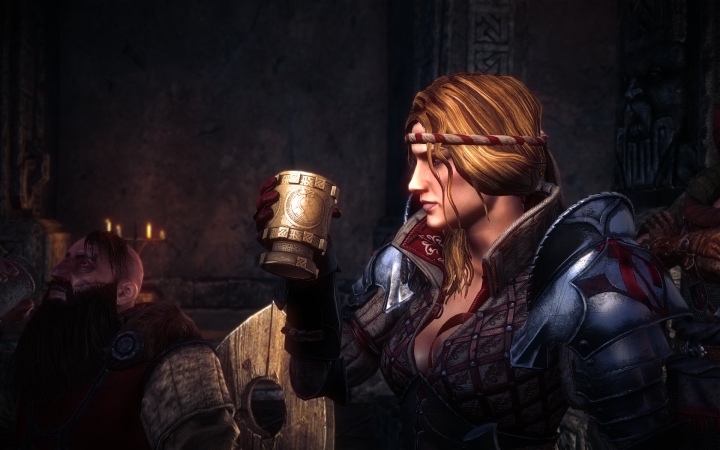
Here’s another prominent character of The Witcher 2 that went M.I.A. Still, her situation is not as grieve as Iorveth’s, since we can at least talk with Filippa Eilhart about her, so Saskia wasn’t completely wiped out from the lore. Also, her absence in The Witcher 3 is understandable plot-wise. She’s inseparably tied to her country, Vergen, which additionally is located far away from the theater of The Wild Hunt. It’s hard to imagine what sort of business would compel Saesenthessis to leave Vergen and travel hundreds of miles.
Too bad CD Projekt RED didn’t give us a glimpse into Saskia’s fate – at least not in the game. We can talk with Filippa, but she doesn’t even know what sort of fate the Dragonslayer met after the events in Loc Muinne. The only insight is provided by the comic book, Matters of Conscience, which comes in digital form with the Hearts of Stone expansion. The story in the comic book is focused on the Virgin of Aedirn (the action takes place mostly during the Nilfgaard invasion), and we should probably treat it as canon (at least those of us who spared the dragon at the end of The Witcher 2) since… you know, what else is there?
The Lodge of Sorceresses
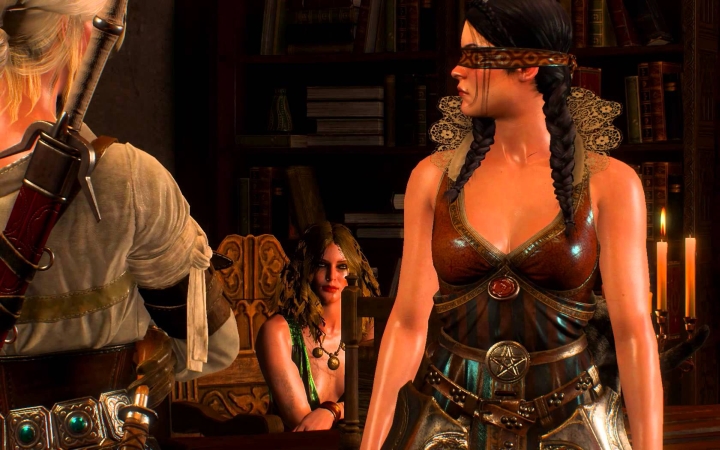
A secret (until a certain point) faction of sorceresses is an important part of the plot in each game of the trilogy. The first time the players could learn about this organization was in act four of The Witcher, where Triss – taking advantage of Geralt being unconscious – is talking to one of the members of the Lodge. Then, the sorceresses came out of the shadows, and played a pivotal role both in the second and the third game, first by engineering a scheme that enveloped Northern Kingdoms in chaos and entangled Geralt of Rivia in their intrigue – and then by helping the White Wolf defeat the Wild Hunt.
And this is where the story ends – after defeating Eredin and his grisly army, the story of the Lodge suddenly ends. There’s no mention of them in the epilogue of The Witcher 3 – there’s no way of knowing whether the ambitious goals set by Filippa and the rest of the powerful mages were realized; whether Emhyr fulfilled his promise of amnesty; and if so, did the sorceresses move to Nilfgaard just to reestablish the Lodge there, and then try to take control of the world again? We can only guess.
Avallac’h
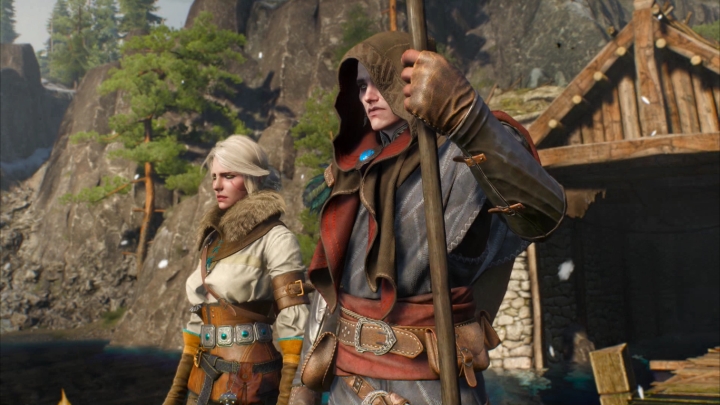
We’re left with a character from The Witcher 3, which was as important as it was disregarded. Frankly, I’m still somewhat dumbfounded with the way the mighty and powerful Avallac’h from the books – the one who brought Ciri to Tir na Lia fully intending to do anything that was necessary for the Alder Folk’s reason of state – turned his back on his people in the game, and became a mentor and friend to Cirilla. I expected him to eventually reveal his own, wicked angle and double-cross Geralt – even as the credits rolled I still half-expected the elf to betray me… That moment, however, never came (although it is known that CD Projekt RED originally planned a major fallout between Avallac’h and Geralt).
We also didn’t get any insight into the subsequent fate of the elf; whatever happens to him after The Witcher 3 is anybody’s guess. The last time we meet him is when he’s helping Ciri to quench the White Frost and prevent the second conjunction of spheres, inside Tor Gvalch’ca on Undvik island. Does Avallac’h return to his home world? What happens with Aen Elle after the Wild Hunt is destroyed? Does their civilization collapse or do they restore their former glory after the threat of succumbing to the White Frost is nullified (if Ciri is successful, of course)? These are just some questions without answers.
Encore: the mysterious gap between The Witcher 2 and 3
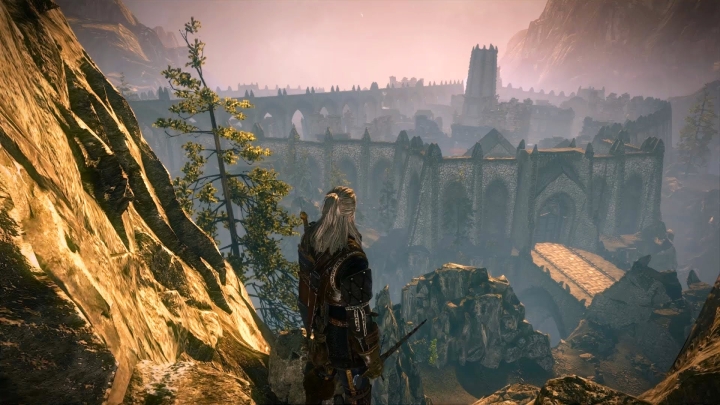
The last of the lot may not fit into the definition of an open-ended thread, but it’s worth discussing nevertheless. What actually happens in-between The Witcher 2 and The Witcher 3? Theoretically, we’re talking about just half a year here, but these few months contain years’ worth of changes.
The Nilfgaardian blitzkrieg ravages Temeria (regardless of our decision concerning that kingdom from the end of Assassins of Kings), Geralt and Triss suddenly become as distant as a long-divorced couple, and the sorcerers of the North face previously unthinkable prosecution (regardless of whether the plot of the Lodge was exposed in Loc Muinne or the blame was put solely on Sheala de Tancarville). Didn’t all this happen a little bit too quickly? Isn’t it a bit artificial?
Well, there are some story-related reasons that warrant such decisions: by abruptly separating Geralt and Triss, the devs created a place where Yennefer fits perfectly. Similarly, the way the remaining events were dealt with allowed the devs to build the plot in such a way as to respect the various decisions made by the players in The Assassins of Kings. After all, does anyone care what happened to Anais La Valette (another character that was neglected in The Wild Hunt, even though her mother, Maria Louisa did make an appearance) if the whole Temeria is drowning in chaos, humiliated by the might of Nilfgaard? Does the fate of the Lodge after Loc Muinne matter if Radovid had enough good reasons to purge the mages anyway?
On one hand these decisions were, I must admit, quite clever… but on the other: didn’t CD Project RED go too far? Didn’t they cut too many corners? They have reached a level of mastery in creating RPGs unattainable by many other studios, but they still could take a lesson from Bioware. A lesson in transferring players’ decisions from game to game.
